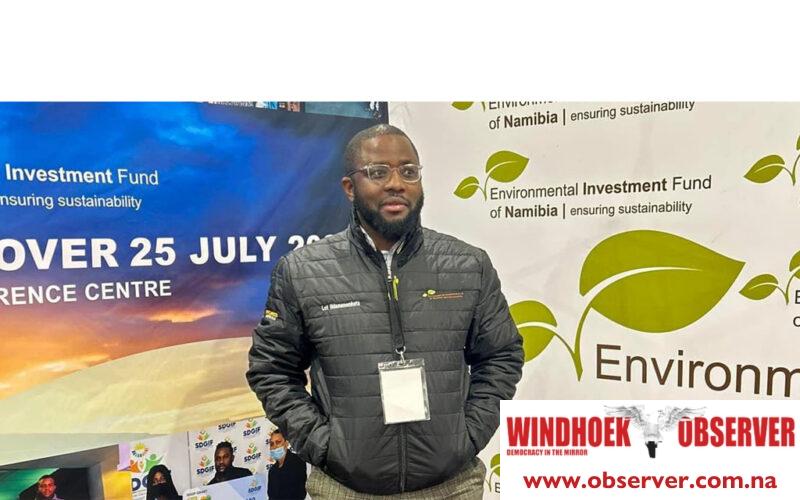Martin Endjala
The Environmental Investment Fund of Namibia (EIF) has so far disbursed grants amounting to N$2.3 billion since its inception in 2001, conserved over 240,256 hectares of land, and approved 71 grants for various environmental projects.
The Fund has created more than 950 employment opportunities (mostly rural-based), and retrofitted 169 boreholes, benefiting over 77,000 individuals with access to portable drinking water.
EIF has attracted and mobilised over N$3.6 billion from multilateral and developmental institutions, showcasing remarkable growth from an initial N$15 million balance to a portfolio worth N$3.6 billion.
This was revealed yesterday by Lot Ndamanomhata, its Corporate Communications Manager, in celebration of its 12th anniversary on February 13. Under the theme “Empowering Innovation for a Sustainable Tomorrow”.
EIF stands as Namibia’s response to the global call for green financing and has evolved into one of Africa’s most dynamic green and climate financing institutions.
Marking the Fund’s 12th anniversary, Ndamanomhata said the Green Impact Facility (GIF) stands as a catalyst for change. Designed to unite stakeholders, from development finance institutions to philanthropic Organizations, GIF innovates through blended finance for untapped Small and Medium Enterprises(SMEs).
It has been in operation since March 2023, the GIF strategically allocated N$72 million in capital, collaborating with reputable Fund Managers like Kongalend Financial Service and Bellatrix SME Finance.
With 95 approved loans, GIF champions financial inclusion, creating 533 jobs and financing projects in renewable energy, sustainable agriculture and more.
GIF’s impactful journey empowers households, nurtures sustainable agriculture, and fuels SME growth. Additionally, the Fund secured accreditation from the Global Climate Fund (GCF) in 2016, acting as a direct access entity for country-level program delivery. This accreditation marked a pivotal role in EIF’s accomplishments over the past twelve years.
Post- reaccreditation in 2022, EIF targets N$1.5 billion by 2026 through GCF, aligning with national development goals for a sustainable green economy.
While positioned to drive these objectives, EIF seeks additional support to enhance its capacity for increased grant funding access.
“The re-accreditation affirms EIF’s alignment with global standards, recognised after a comprehensive institutional review by the GCF,” said Ndamanomhata.
Notably, the Fund’s achievements include leveraging over N$640 million for climate action grants, notably funding impactful projects like climate resilient agriculture, improving rangeland and ecosystem management, and ecosystems-based adaptation.
This commitment he said, underscores EIF’s dedication to environmental sustainability, serving Namibia’s communities with distinction, and fostering a resilient future.
Meanwhile, its future focus is investing in nature, mobilising financial resources for sustainable solutions, scaling up investment strategies, balancing financial returns with environmental impact, leveraging corporate investments for conservation, and aligning efforts with the Sustainable Development Goals (SDGs).
It also involves advocating for policy changes, utilising technology for sustainable development, empowering communities, and promoting inclusive financial systems.
As it celebrates 12 years of success, it looks forward to a future where innovation continues to drive sustainability, making a lasting impact on Namibia’s environmental and economic well-being.
In collaboration with the government, the EIF spearheaded SDG Namibia One, securing a EUR40 million grant from the Dutch government during COP27.
This transformative investment platform, centred on green hydrogen, aims to drive Namibia’s energy transition and position the nation as a renewable energy hub.
Invest International’s anchor investment of €40 million kickstarted the SDG Namibia One Fund, with plans to grow it to N$17.8 billion.
This fund empowers the Namibian government to strategically invest in projects that bolster the local green transition, fostering economic growth, job creation, and the utilization of green hydrogen.




